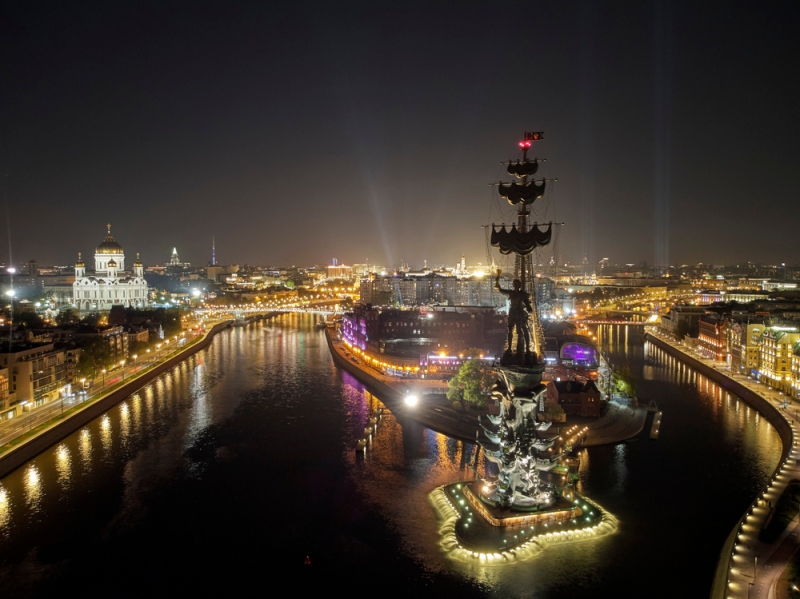It’s a curious fact, but you might never have heard of the most successful artist in the world. This year he enjoyed his first full scale British retrospective, and he recently launched a major exhibition at his own Museum of Modern Art in Tbilisi, which places Charlie Chaplin in the Georgian landscape of his childhood. He’s also gifted art to governments and huge organisations around the world: if you’ve been to London chances are you’ve walked past a Tsereteli.
He’s also deeply involved in the culture of art and artists in Russia and the world! As President of the Russian Academy of Arts, he has a direct hand in the education of future Russian artists. They benefit not only from his considerable experience (both artistic, and in managing the sort of big project that running an art academy is) but also from his influence. From an early part of his career he’s worked closely with the government in Russia, during and after the Soviet era. His presidency means the needs of the Academy of Arts will always be on the agenda of the Russian establishment.
But who is Zurab Tsereteli? What are his major works? For two many people, answers to these questions will turn up a blank. Today we’re taking a look at the modern Russian master and providing some illuminating answers.
Early Years
Born and trained in Tbilisi, Georgia (and its State Academy of Arts), the young Tsereteli soon relocated to Moscow in search of greater artistic opportunities. It’s an irony, then, that his reputation making commission took him back to Georgia, to create a series of bold, artistic bus shelters across the Abkhazia region in a government scheme to bring art to the citizens.
The success of this project (the bus shelters still stand, and are a great focus for a trip to the area) lead to a career where art on a large scale mixed with cooperation with large organisations. Tsereteli’s work has always had a political slant, if not in the subject matter then in his understanding of how art can bridge boundaries. His gifts of artworks have helped to shore up or even create diplomatic relationships in uncertain times.
‘To The Struggle Against World Terrorism’ is the best example of this political, bridge-building instinct. A monument to the victims of the 9/11 attacks, it was gifted to America in the years following the attack, as a show of solidarity from the Russian people.
With his talent, political nous and mastery of the spectacle of scale, it’s no surprise that Zurab Tsereteli is one of the most successful artists in the world.







